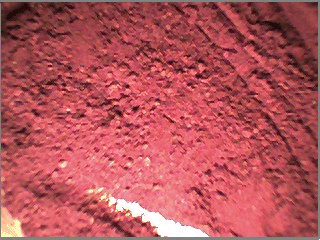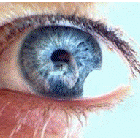Hey Newbees. How goes it? New to the Hive?
You’ve read all of the FAQ’s at the top of the forums? You know what TFSE is and how to use it? You know the difference between; SWIM, and SWAM?
And now you’re at the point where you are considering attempting a synth? Probably a Nano?
But, now,……what’s that? You say you’re confused? Too much information, you say. Too many methods? Well, never fear, because S/D understands . What you need, is a
“KISS”. The “KISS”, program,……….. that is.
So, here we go!
The S/D “KISS” Q & AKeep
It
Simple
Stupid
SummaryThis Q & A will cover the basic information that a newbee needs to consider. It will not go into 500 word essays or ramblings of every possible option known to man. It will explain briefly, and in “KISS” terms, the information that you need to know.
But, first a word from our attorney; Disclaimer;The contents of this text are purely for entertainment and informational purposes. The author does not advocate, nor partake in illegal activity. The author shall assume no responsibility for any damage resulting directly or indirectly from any information read.
Nothing illegal was used in photos. Any and all “chemicals” pictured are “simulated”, for the purpose of visual aid.

By reading further you acknowledge that you have; Read, understand, and agree with the contents of this disclaimer in whole.
If you do not agree, please exit, the thread.
And now,………….back to our show;
The S/D “KISS” Q & A(Part 1)
Q. 1.) What is the first thing that I need to do?
A. Number one, and always number one. Before you even open a box of pills, your safety gear and systems will be in place. If you designate yourself to be the dreamer, then you and
only you, are responsible for the physical well being of yourself as well as any people, or property in the immediate area. Period! S/D’s not going to go into any more detail than that, as there is plenty of text already here on that subject.
A thing as simple as a bucket of sand, has saved S/D’s ass, a couple of times, in the past.
Q. 2.) How, is it that we learn?
ACorrect! Very good! We, learn through repetition. We note our mistakes and learn from them as best we can. We, then attempt to not repeat any previous mistakes.
View failure, not as a loss, but a gain, (of experience and knowledge), learn from your mistakes, and you will succeed! You will succeed! Repeat after me,; “I will succeed”.
That’s important, because if you think that you can’t. You’re right!!
Q. 3.)Do I need a bunch of glassware or fancy equipment, to do a simple RNX?
A Absolutely not.
Having lab glassware and lab equipment is a plus. But, especially being a newbee, S/D knows that most of you don’t have the money or the resources. Besides, you don’t even know if you can do a successful synth, or not right?

This is a simple glass salt shaker. You will note, that it is made of very thick glass and is smooth, in shape, as well as clear. S/D bought this item at a thrift store for twenty-five cents. He has done probably upwards of a hundred synths, in the past with this shaker. From the smallest nano up to 3Gr.of pfed(all thought , that’s really pushing the threshold)
Q. 4.) What parts of the pre-RNX phase should I bee most concerned with?
Clean and dry. All starting precursors must bee clean and dry. The majority of concerned should bee focused on the pfed. Un-arguably the number one cause of failed RNX’s is sub-clean feedstock.
S/D recommends, regardless of the extraction technique used, the Geez precip technique be utilized.
Post 432344 (missing)
(geezmeister: "pseudo precipitation technique", Stimulants) ,………… Doing it will remove residual gaks and if not getting it completely clean, should get it clean enough for a successful RNX. (As the world of Gak-ta-lak, changes rapidly, this may in the future become untrue)



Photos, from top to bottom; MBRP, LGRP and pfed.
Q. 6.How about set up methods? How does one decide? You’ve got the condenser, push-pull, balloon, kitty litter, ect.
A. S/D’s personal opinion is that too much emphasis is placed on these methods.
Bottom line is, all you need is something that will keep some HI, in your reaction vessel and contain some smoke.
Q. 7. So what kind of setup should I use?
A. This is the setup that S/D recommends. It will work, stand alone, on top of a condenser, or with a P/P(attach P/P hose in place of punch-ball)

S/D is not sure whose idea this originally was. He saw it mentioned years ago in an old write-up. He has since adopted it and uses it exclusively. It carries many advantages.
1.) Easy to construct.
2.) The rubber stopper can easily be changed for different sized flasks.
3.) Generally requires no additional sealing, I.E, tape.
4.) Takes a lot of the guess work out of H20.
5.) Inexpensive, so it is disposable or reusable.
6.) Allows you to add H20 as needed to RNX, without releasing the contents of the RNX vessel.
Pyrex “T”’s are recommended. S/D scored a dozen, a while back for $5.00, on one of those on-line auction places.
Poly “T”’s (pictured lower right) can be substituted, but need to bee replaced regularly.
The size pictured is 1/4 X 1/4 X ¼.
Never use metal of any kind.
A punch-ball is also recommended. Standard balloons can be used, but are subject to rupture. S/D has had punch-balls grow to nearly the size of a basket ball and not rupture.
Q.8 O.K., so now what about ratios? It seems every bee suggests a different one. How do I know which one is right for me?
A That’s a very good question. One that can lead to much confusion. One can spend countless hours reading text and still be left wondering, What is the right ratio?
So, here’s the deal. All ratios given by experienced bees are correct. Now, you’re even more confused, huh? S/D will explain.
The standard ratios by the book, using L/G precursors are 1: 1: .3(1/3) E:I:R
Using MB/RP this should be adjusted to 1:1:1
Next we only need to know one simple fact. That is; It is not possible to over-reduce, pfed, using the REI method.
This means that any ratios that the “R” and “I” are higher (than the book ),are acceptable.
Loading up on the “I” and “R” will sometimes over come gaked pfed.
S/D recommends that you do not exceed 1:2:2, simply because anything beyond that is overkill and a simple waste of precursors.
End Part 1
Stay tuned for part 2, when S/D will cover important topics like, cook times and temps., Gassing and Power Boat Racing!!

